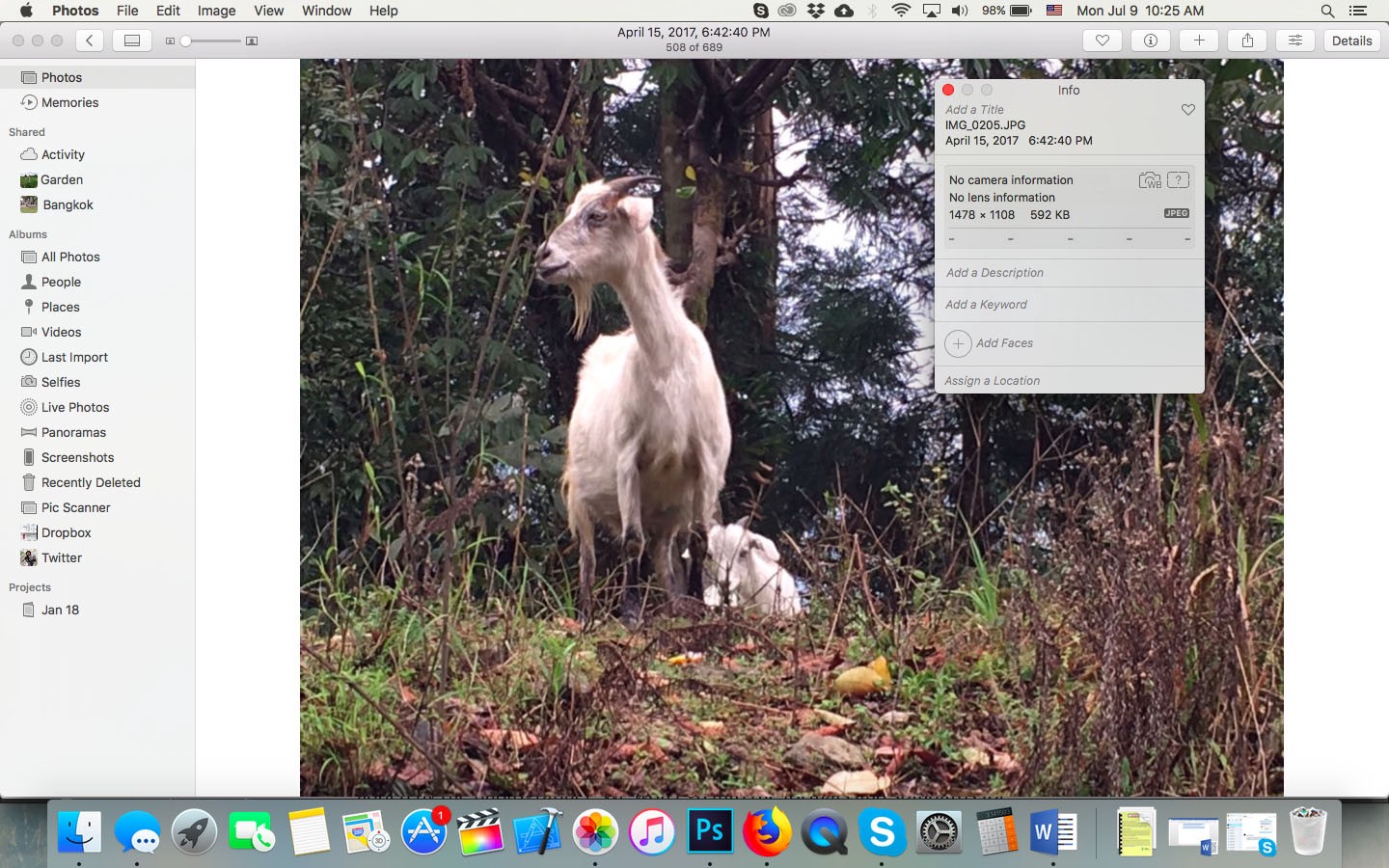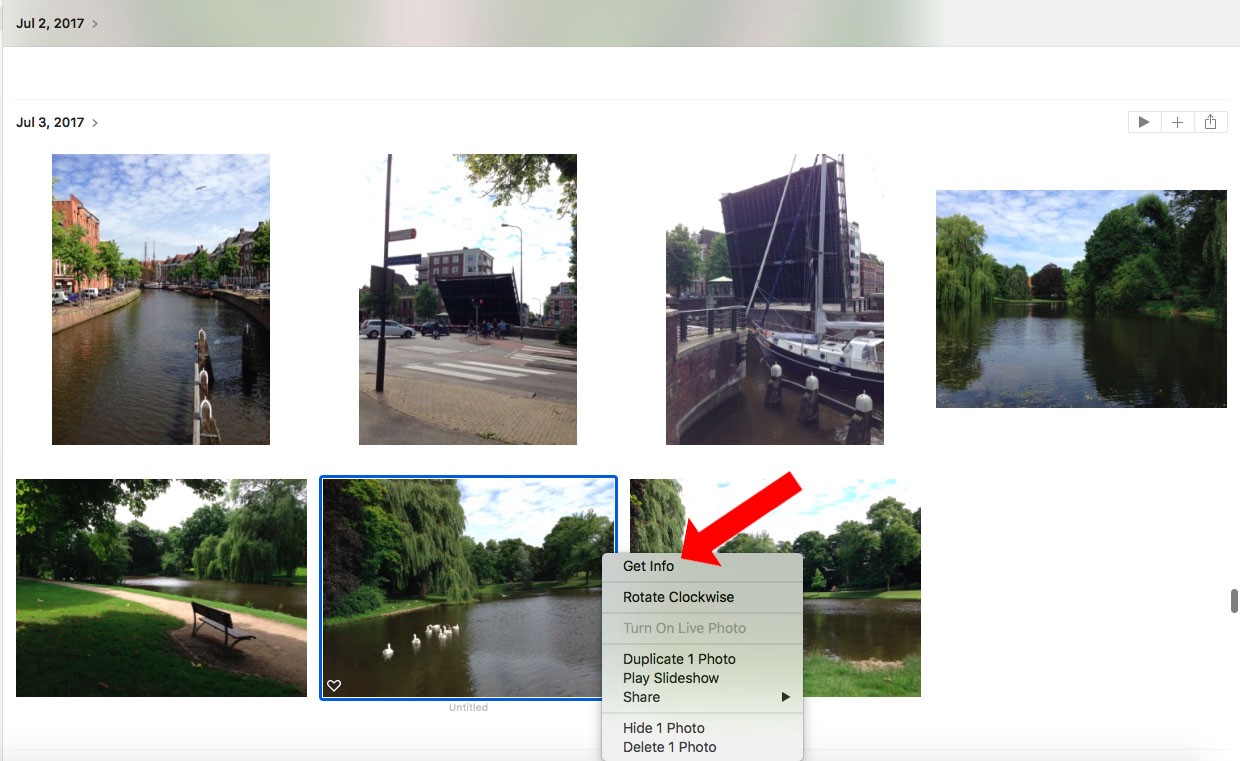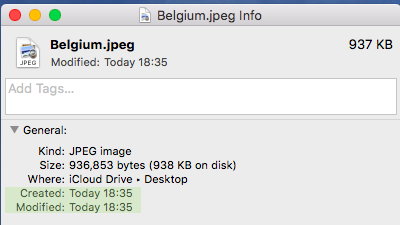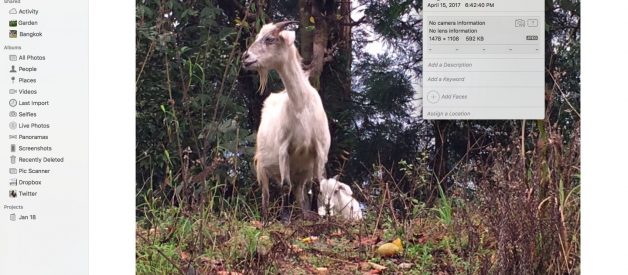
What is image metadata
All digital cameras capture photos in the form of data, but they also record a lot of additional data about this data. This data about the pictures is called metadata. Depending on the camera, it can be anywhere from a dozen up to 5,000 pieces of information. It includes camera details (such as make, model, focal length, exposure etc.), photo details (date, location, format etc.), and other information (copyright, usage terms etc.) Much of this is automatically stamped by the camera, while some (e.g. description, keywords etc.) can be added by the photographer. We won?t go into the formats and standards for metadata, but you can read about it here or search on the Internet for ?IPTC and EXIF metadata? to learn more.
How is metadata useful?
Metadata is extremely useful when you need to search through and organize a large number of photos. Programs such as Photos rely on metadata to display photos by year, or in helping you find photos taken at a certain place.
Metadata fields are defined for every conceivable bit of information anyone might want to capture about a photograph, but those most useful to regular folks are: Date & Time Taken, Title (Filename and format), Location, Description and Keywords.
Why would I edit metadata?
Photos taken with your iPhone or other digital cameras already have a lot of metadata. However, there are many reasons why you might want to add or amend some details, for instance:
1) To add a caption or title describing the photo (or a batch of photos), e.g. ?Terri?s first birthday party?, for aiding subsequent organization and search.
2) To change the default file name, which might be IMG_0140.jpg or worse, to something more meaningful, e.g. ?Terri?s First BD001.jpg.?
 Default file names assigned by digital camera aren?t exactly informative
Default file names assigned by digital camera aren?t exactly informative
3) If location services on your iPhone were disabled when you took the photo, but you now want to add location information.
4) When you have 35,000 photos in your digital library, you probably should add descriptive keywords to help find a specific picture when needed.
5) If the date and time setting on your camera was wrong, e.g. you took lots of photos on your New Zealand vacation, but back in U.K., the time stamps on all photos were 11 hours behind.
6) You scanned a bunch of 1993 ?Baby?s first year? photos, but the metadata ?Date Taken? field for all of them shows the 2018 scanning date.
How to view & edit metadata?
Like all other digital cameras, iPhone and iPad cameras also record metadata. You cannot see it with the iOS version of Photos app, but can view and edit it with Photos for Mac. You can also edit the most important bits of metadata of the photographs. If you have taken photos with your DSLR or other digital cameras and imported them into Photos, those can also be edited.
There are a few different ways to view and edit metadata on your Mac (Hint: Do it with Photos app or Preview, NOT Finder. How/why explained below):
Photos app: Open Photos app on Mac. With Photos tab selected in the left pane, you will see thumbnails of photos in the right pane. Right click any thumbnail and select Get Info.
 Right click any thumbnail in Photos library, and select Get Info
Right click any thumbnail in Photos library, and select Get Info
A window opens, showing the file name and format (e.g. IMG_0140.jpg), camera data, and profile photos of people that Photos recognizes.

Click (i) in the window, and you can add or edit title, description, keywords and location. Photos saves all these edits in the appropriate metadata fields. Typing any of these details in Photos app?s search bar will let you quickly find the photo afterwards.
If you have already opened a photo by double clicking its thumbnail, clicking on the Info (i) button near top right of the screen will open the above-mentioned metadata window.
Once you have added metadata with Photos app, you can export them with or without added metadata. To export with your edits, click File > Export, and in the message box that opens, check the desired boxes in Info section. To export without edits, ensure that the said boxes are unchecked, then export.
Preview: To view more detailed metadata of a photo on your computer or in a cloud service such as Dropbox, Google Photos etc., open it in Preview by double clicking it.

Now click Tools > Show Inspector in the top toolbar. This opens a window containing four tabs. The first tab provides summary information, and clicking on the second (i) tab reveals 5 more tabs: General, IPTC, EXIF, JFIF and TIFF. Click on these to see all the metadata information.
NOT with Finder: Be warned that exporting a picture from Photos or other apps to desktop, and then viewing its metadata in Finder by right-clicking and selecting Get Info, will show Date Created and Date Modified as ?Today?, not the EXIF/IPTC date in metadata. Mercifully, other metadata and edits, i.e. file name, title, description and keywords are displayed correctly.
 Finder may show wrong info in Date Created/Modified
Finder may show wrong info in Date Created/Modified
Advanced metadata editing
 Lightroom (1 week free, then $118.99/year)
Lightroom (1 week free, then $118.99/year)
For professional users, Lightroom, Photo Mechanic, and Adobe Bridge provide extensive metadata management capabilities.
 SnipTag (3 days free, then $16.99/year)
SnipTag (3 days free, then $16.99/year)
For lay users, SnipTag for Mac is a good, inexpensive option for managing filenames, dates, locations, description, caption, keywords and 20 other IPTC metadata tags, using keyboard or voice dictation.
***
Metadata in scanned photos:
- Photos scanned with a scanner will obviously not have any camera data, GPS coordinates etc. If scanning with a digital camera or an iPhone app, you?ll get camera data but GPS data will be of the place where you scanned ? not where you took the photo. And in all scanned photos, date created will be the date you scanned ? not when you took the photos.
- Photos for Mac isn?t ideal for batch-editing ?Date Taken? on scanned photos. This is because Photos takes the first photo in the batch, compares the date and time in the metadata (which is the scanning date) with the date and time that you input manually, and it applies the same offset to all other photos in the batch. This is fine for Case 5 (New Zealand trip) above, but not for Case 6 (baby?s first year). For the latter case, you?ll either need to amend the dates one photo at a time, or use another app.
- Photos for Mac lets you add keywords to a batch of photos. Select multiple photos (Command + click) > right click > Get Info > type in your keywords. These can be the names of people in the photos, place, year, or anything else that applies to all those photos.
Also read: 10 Ingenious Uses for Your Disused Old iPhone or iPad



